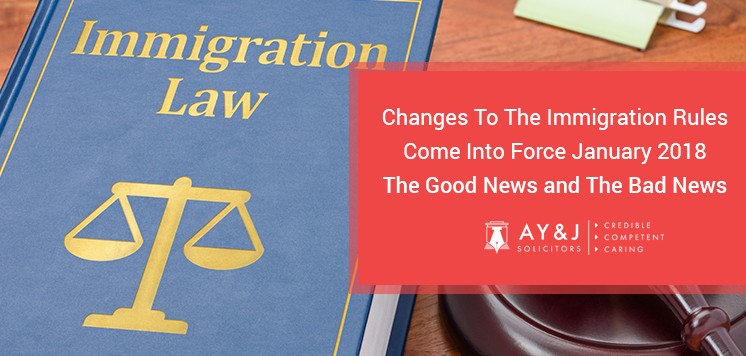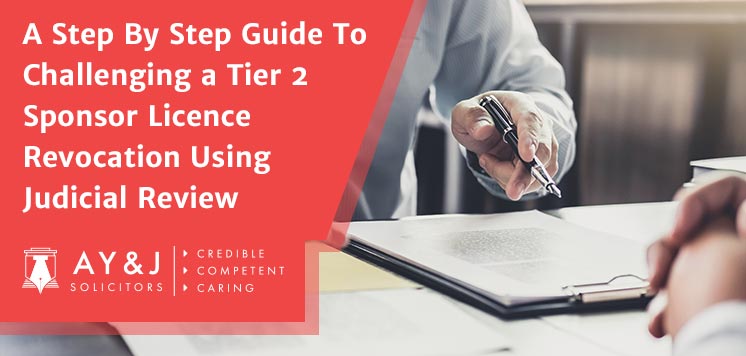Disclaimer: The information in this blog is accurate as of its publication date. Any updates after that date are not reflected here.
In December 2017, the Home Office presented a new Statement of Changes (the Statement) in Immigration Rules (HC309) to Parliament. Most of these changes came into effect on 11th January 2018.
The changes include some exciting news for those wishing to come to the UK on the Tier 1 Exceptional Talent Visa; however, some challenges are presented for Tier 2 migrants applying for Indefinite Leave to Remain.
The main changes are as follows:
Good News – Places available under Tier 1 Exceptional Talent Visa will double
The Tier 1 Exceptional Talent Visa is an incredibly flexible way for highly talented artists, scientists, engineers, and tech professionals to come to the UK to further expand their career.
The UK government recognises what an extraordinary contribution such migrants make and has, in turn, doubled the number of places available to 2,000.
To acquire a Tier 1 Exceptional Talent Visa, you need to be endorsed by one of the Designated Competent Bodies who has been given authority by the Home Office to determine who meets the visa criteria:
- The Royal Society
- The British Academy
- The Royal Academy of Engineering
- Arts Council England
- Tech Nation
If you receive an endorsement, you then need to apply for leave to enter the UK.
Applicants who do not meet the ‘exceptional talent’ criteria may apply for the visa on the ground of showing ‘exceptional promise’ in their field. After three years of continuous residency, successful applicants can also apply for Indefinite Leave to Remain (ILR).
The visas available under the scheme are provided on a first come, first served basis and, given the criteria for endorsement is so strict, obtaining expert immigration advice is a must.
Bad news – Points-Based migrants and ILR absences
Tier 2 migrants who are required to travel extensively for work will need to keep a close eye on the number of days they are absent from the UK. Included in the Statement is a change to the way the Home Office will calculate absences from the country when assessing whether an ILR applicant meets the continuous residency requirements.
Instead of assessing the number of days a Tier 1 or Tier 2 migrant against a fixed consecutive 12-month period, as it previously has, the maximum 180-day limit will now apply to any rolling 12-month period during the qualifying period for ILR (normally five years).
The restrictions surrounding the continuous residency requirements will also now apply to the main applicant’s partner. This means Tier 1 and Tier 2 holders who travel frequently will be unable to put their partner forward as the main applicant, so they can qualify themselves for ILR without having to meet the requirement.
Good News – Introducing electronic entry clearance
UK border control looks poised to (finally) leap into the 21st century and embrace electronic entry clearance.
A new system will be trialled among certain groups before being rolled out across the country will digitalise and streamline the process of entry clearance, which will be in future issued electronically.
Good news – Minor but significant changes to the Tier 2 category
Students who hold a Tier 4 visa will now be able to apply to submit an application for a Tier 2 General Visa as soon as they have completed their course, as opposed to having to wait for their final results. Those who have completed a Masters will be the main beneficiaries of this change, as they often have to wait many months for their thesis to be marked.
In addition, posts to be held by researcher applicants who are recipients of supernumerary research Awards and Fellowships, and for established research team members sponsored by either a Higher Education Institution or a Research Council will be exempt from the Resident Labour Market Test.
Finally, the requirement for ILR applicants to have been continuously employed (not more than 60 days gap rule) for five years before applying has been abolished.
Good news – Tier 1 Entrepreneur Visa changes
Under previous rules, to acquire ILR, the two or more positions created must have existed for a minimum of 12 months during the applicants most recent period of leave. Now an application can be made even if the current leave to remain was granted less than 12 months prior. To qualify in these circumstances for Tier 1 entrepreneur visa extension, the positions must have existed at least 12 months before the date of the current application.
To help tighten up the job creation criteria, applicants applying for an extension will need to state the paid hours of those employed as well as the hourly rate they are being paid.
Finally, applicants will be unable to borrow the investment funds required from someone who already has a Tier 1 Entrepreneur Visa.
Bad news – Tier 1 Investor Visa
Individuals who entered the UK on a Tier 1 Investor Visa prior to 6th November 2014 can only rely on the equity of their home to make up the balance of funds if:
- it is their main residence
- if the property is jointly held as Tenants in Common, only the applicant’s portion will be taken into account
Good news – Tier 4 category
Students are now permitted to apply for leave to remain while in the UK, in order to complete a work placement or study abroad programme. Leave to remain can also be applied for so students can complete their course after completing a work placement or study abroad programme.
In summary
These changes may raise a lot of questions, especially for points-based system migrants seeking ILR. Our expert team can assist you with all aspects of immigration law and will take the time to understand your situation so that we can protect your best interests at all times.
A Y & J Solicitors are specialists in immigration law based in central London. If you would like to have more information, please contact us at contact@ayjsolicitors.com or visit our website at www.ayjsolicitors.com.
Disclaimer: No material/information provided on this website should be construed as legal advice. Readers should seek an appropriate professional advice for their immigration matters.








